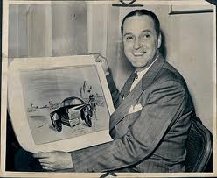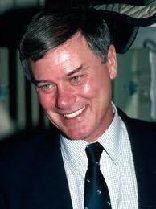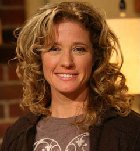
Gulls, or colloquially seagulls, are seabirds of the family Laridae in the suborder Lari. They are most closely related to the terns and skimmers and only distantly related to auks, and even more distantly to waders. Until the 21st century, most gulls were placed in the genus Larus, but that arrangement is now considered polyphyletic, leading to the resurrection of several genera. An older name for gulls is mews, which is cognate with German Möwe, Danish måge, Swedish mås, Dutch meeuw, Norwegian måke/måse and French mouette, and can still be found in certain regional dialects.
Gulls are typically medium to large in size, usually grey or white, often with black markings on the head or wings. They typically have harsh wailing or squawking calls; stout, longish bills; and webbed feet. Most gulls are ground-nesting carnivores which take live food or scavenge opportunistically, particularly the Larus species. Live food often includes crustaceans, mollusks, fish and small birds. Gulls have unhinging jaws which allow them to consume large prey. Gulls are typically coastal or inland species, rarely venturing far out to sea, except for the kittiwakes. The large species take up to four years to attain full adult plumage, but two years is typical for small gulls. Large white-headed gulls are typically long-lived birds, with a maximum age of 49 years recorded for the herring gull.
Gulls nest in large, densely packed, noisy colonies. They lay two or three speckled eggs in nests composed of vegetation. The young are precocial, born with dark mottled down and mobile upon hatching. Gulls are resourceful, inquisitive, and intelligent, the larger species in particular, demonstrating complex methods of communication and a highly developed social structure. For example, many gull colonies display mobbing behavior, attacking and harassing predators and other intruders. Certain species have exhibited tool-use behavior, such as the herring gull, using pieces of bread as bait with which to catch goldfish, for example. Many species of gulls have learned to coexist successfully with humans and have thrived in human habitats. Others rely on kleptoparasitism to get their food. Gulls have been observed preying on live whales, landing on the whale as it surfaces to peck out pieces of flesh.
The gulls have a worldwide cosmopolitan distribution. They breed on every continent, including the margins of Antarctica, and are found in the high Arctic as well. They are less common on tropical islands, although a few species do live on islands such as the Galapagos and New Caledonia. Many species breed in coastal colonies, with a preference for islands, and one species, the grey gull, breeds in the interior of dry deserts far from water. Considerable variety exists in the family and species may breed and feed in marine, freshwater, or terrestrial habitats.
Most gull species are migratory, with birds moving to warmer habitats during the winter, but the extent to which they migrate varies by species. Some migrate long distances, like Franklin's gull, which migrates from Canada to wintering grounds in the south of South America. Other species move much shorter distances and may simply disperse along the coasts near their breeding sites.
Gull in the coat of arms of Ahlainen
A big influence on non-breeding gull distribution are food patches. Human fisheries especially have an impact since they often provide an abundant and predictable food resource. Looking at two species of gulls dependent on human fisheries, Audouin (Ichthyaetus audouinii) and black-backed gulls (Larus fuscus), their breeding distributions (especially the black-backed gull) was heavily impacted by human fishing discards and fishing ports.
Most gulls breed once a year and have predictable breeding seasons lasting for three to five months. Gulls begin to assemble around the colony for a few weeks prior to occupying the colony. Existing pairs re-establish their pair-bonds, and unpaired birds begin courting. Birds then move back into their territories and new males establish new territories and attempt to court females. Gulls defend their territories from rivals of both sexes through calls and aerial attacks.
Nest building is also part of the pair-bonding. Gull nests are usually mats of herbaceous matter with a central nest cup. Nests are usually built on the ground, but a few species build nests on cliffs, including the kittiwakes, which almost always nest in such habitats, and in some cases in trees, and high places like Bonaparte's gulls. Species that nest in marshes must construct a nesting platform to keep the nest dry, particularly in species that nest in tidal marshes. Both sexes gather nesting material and build the nest, but the division of labor is not always exactly equal. In coastal towns, many gulls nest on rooftops and can be observed by nearby human residents.
If you want to read a lot more, go here: https://en.wikipedia.org/wiki/Gull
- 1 1/2 cups graham cracker crumbs
- 1/4 cup sugar
- 1/2 cup (1 stick) butter, melted
- 1 (8-ounce) package cream cheese, softened
- 1 (14-ounce) can sweetened condensed milk
- 1/2 cup fresh lemon juice
- 1 teaspoon finely grated lemon zest
- 2 cups frozen whipped topping, thawed
- Coat an 8-inch square baking dish with cooking spray. In a medium bowl, combine graham cracker crumbs, sugar, and butter; mix well. Press crumb mixture firmly into prepared baking dish and refrigerate until ready to fill.
- In a large bowl, beat cream cheese and condensed milk until smooth. Beat in lemon juice and lemon zest. Stir in whipped topping just until mixed. Pour into graham cracker crust.
- Refrigerate 6 hours, or until filling is firm. Slice into 2-inch squares and serve.
People and Places
The Lenape people populated the land now known as New York. They’re also known as the Delaware Indians. Their settlements also spread across New Jersey, Pennsylvania, and parts of Delaware and Connecticut. However, the Dutch were the first Europeans to settle the area and named it New Netherland.
Settlements and trading posts developed up and down the Hudson River. Albany, the state capital, was once called Beverwijck and the center of the fur trade. In 1624, the Dutch established a settlement on Nutten Island named New Amsterdam. Two years later, they would move to Manhattan Island, and the colony flourished.
Over time, the settlement exchanged hands between the Dutch and British several times, each without bloodshed. The first exchange, in 1664, would name it New York.
Independence & Influence
After declaring independence, the colonies later created the Articles of Confederation. Soon they discovered a stronger governing document was needed.
While New York sent three delegates to the Constitutional Convention in 1787, only Alexander Hamilton remained to sign the final document. A Federalist, Hamilton held strong opinions that could potentially influence the framing of the young nation’s new governing document. For one, Hamilton supported a life term of service for the President.
From the timeless halls of Ellis Island to the epic beauty of Niagara Falls and breathtaking Adirondacks, New York is infused with grand vistas and endless historical paths to retrace. With New York City as the epitome of a melting pot long before the term was coined, the state is full of inspiration for artists, sparks intelligent debate and philosophical discussion.

















